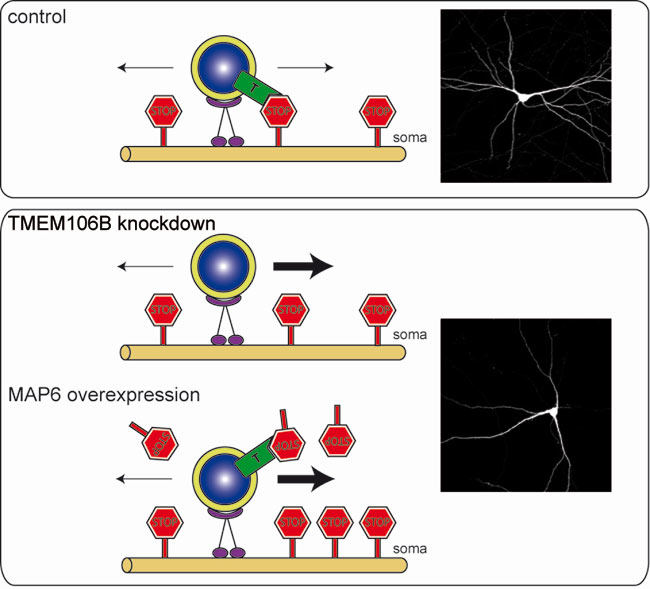The FTLD risk factor TMEM106B and MAP6 control dendritic trafficking of lysosomes
EMBO J. 2014 Jan 8. [Epub ahead of print]
| Authors/Editors: |
Schwenk BM Lang CM Hogl S Tahirovic S Orozco D Rentzsch K Lichtenthaler SF Hoogenraad CC Capell A Haass C Edbauer D |
|---|---|
| Publication Date: | 2014 |
| Type of Publication: | Journal Article |
TMEM106B is a major risk factor for frontotemporal lobar degeneration with TDP-43 pathology. TMEM106B localizes to lysosomes, but its function remains unclear. We show that TMEM106B knockdown in primary neurons affects lysosomal trafficking and blunts dendritic arborization. We identify microtubule-associated protein 6 (MAP6) as novel interacting protein for TMEM106B. MAP6 over-expression inhibits dendritic branching similar to TMEM106B knockdown. MAP6 knockdown fully rescues the dendritic phenotype of TMEM106B knockdown, supporting a functional interaction between TMEM106B and MAP6. Live imaging reveals that TMEM106B knockdown and MAP6 overexpression strongly increase retrograde transport of lysosomes in dendrites. Downregulation of MAP6 in TMEM106B knockdown neurons restores the balance of anterograde and retrograde lysosomal transport and thereby prevents loss of dendrites. To strengthen the link, we enhanced anterograde lysosomal transport by expressing dominant-negative Rab7-interacting lysosomal protein (RILP), which also rescues the dendrite loss in TMEM106B knockdown neurons. Thus, TMEM106B/MAP6 interaction is crucial for controlling dendritic trafficking of lysosomes, presumably by acting as a molecular brake for retrograde transport. Lysosomal misrouting may promote neurodegeneration in patients with TMEM106B risk variants




